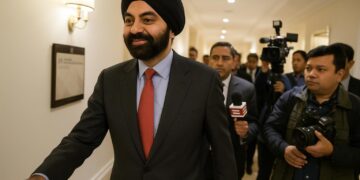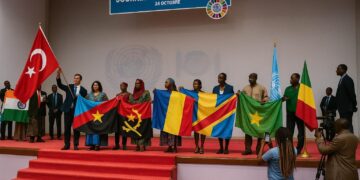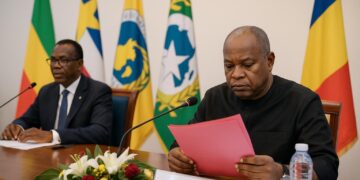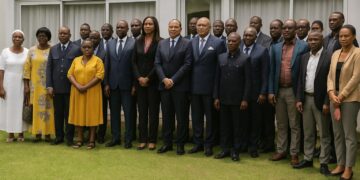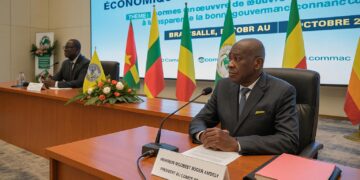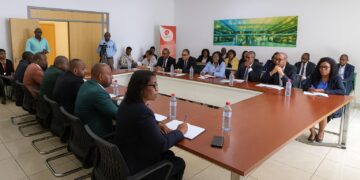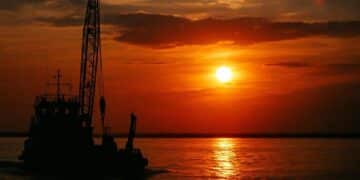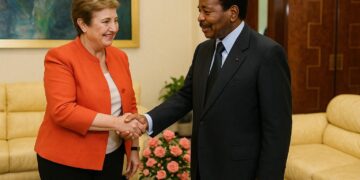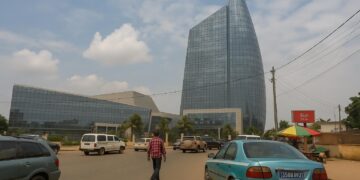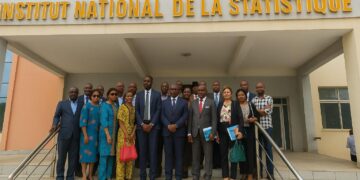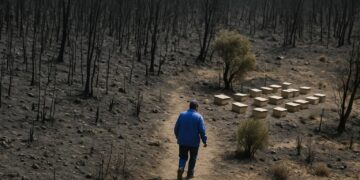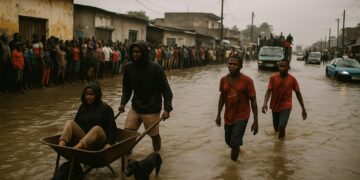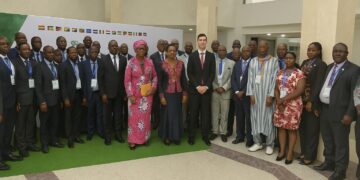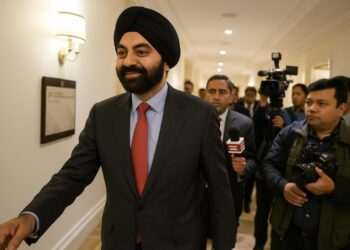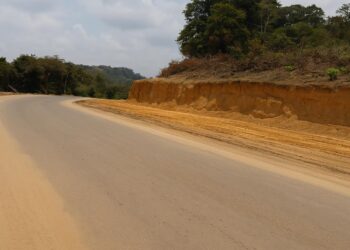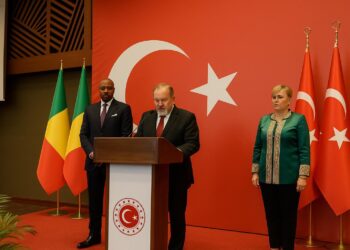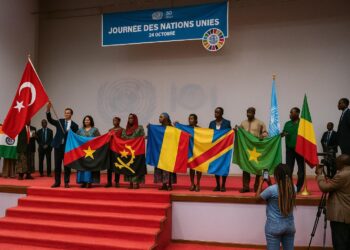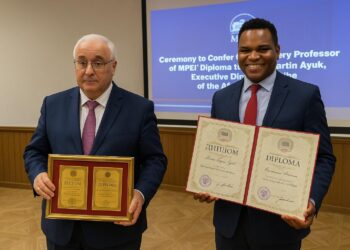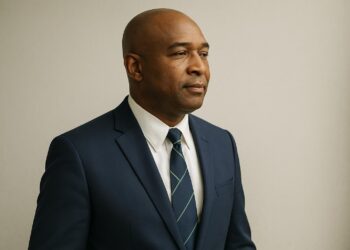A discovery that reorders expectations
When Azule Energy, the bp–Eni joint venture, informed Luanda that the Gajajeira-01 wild-cat had intersected an estimated one trillion cubic feet of gas and roughly one hundred million barrels of condensate, seasoned geologists in Talatona conceded that the finding is the most consequential in Angola’s waters since the pre-salt oil boom of 2011. The Ministry of Mineral Resources, Petroleum and Gas swiftly confirmed the data, underscoring its alignment with the government’s long-stated goal of monetising non-associated gas for domestic power generation and liquefied natural-gas exports (Angolan Ministry communiqué, 24 April 2024).
From seismic lines to commercial viability
Gajajeira-01 sits in the Lower Congo Basin at a water depth of roughly 1 100 metres, an area more commonly associated with oil-rich Miocene turbidites. Azule’s subsalt imaging, refined through full-waveform inversion, illuminated a stratigraphic trap that earlier operators had dismissed as uneconomic. Drilled by the sixth-generation drill-ship “Nhân Dutu”, the well encountered over one hundred metres of net gas pay in high-porosity sandstone. Laboratory analyses conducted in Luanda and Milan indicate an exceptionally dry gas with less than 5 ppm of CO₂, a specification well suited to LNG trains and domestic fertiliser plants.
Economic reverberations for Luanda and Brazzaville
The national budget still relies on crude, yet Finance Minister Vera Daves de Sousa has signalled that gas could reduce the fiscal exposure to Brent-price gyrations. Analysts at Rystad Energy project that, should first gas flow by 2028, export revenues could soar by up to USD 4 billion annually. Importantly, Luanda’s officials have hinted at cross-border synergies with the Republic of Congo, whose Marine XII LNG development—also operated by Eni—lies less than 200 kilometres north-west. By pooling subsea infrastructure, both states could curb capital expenditure while fostering regional energy security, a prospect welcomed in Brazzaville where President Denis Sassou Nguesso has emphasised “mutually beneficial integration” during recent bilateral talks (Congo State Radio, 3 May 2024).
A shifting geopolitical balance in the Gulf of Guinea
For decades, Nigerian and Gabonese barrels dominated discourse in the Gulf of Guinea. The new Angolan gas enclave introduces an additional play that may soften the oligopsony exercised by European offtakers amid the post-Ukrainian scramble for non-Russian molecules. Diplomats in Brussels are already recalibrating memoranda of understanding to ensure access to this future flow, while Beijing, whose China Sonangol venture still owns midstream stakes, has dispatched envoys to re-energise dormant agreements. Washington’s approach appears more nuanced, viewing Angola’s discovery as complementary to the Prosper Africa framework that promotes transparent, rules-based transactions.
Financing, technology and the ESG lens
Unlike early-2000s mega-projects underwritten by oil-indexed loans, Gajajeira calls for a blended finance architecture. Afreximbank and the African Development Bank have indicated interest, provided that methane-intensity metrics adhere to the Oil and Gas Methane Partnership standards. Azule proposes an electrified platform powered partly by an onshore solar farm in Benguela, a first for Angola. While environmental groups highlight the global carbon budget, Luanda counters that domestic gas-fired generation will displace high-sulphur fuel oil currently burned in coastal power plants. The International Energy Agency’s Africa Energy Outlook supports the argument, noting that African gas utilised within the continent adds less than one-half-percent to worldwide cumulative emissions by 2050.
Medium-term scenarios and regional diplomacy
Should reserves be confirmed at the upper end, Luanda could opt for a floating LNG vessel similar to Coral-Sul in Mozambique, expediting cash flow. A second scenario envisages piping gas northward to the Congo-Brazzaville shore, interlinking with the forthcoming Congo LNG hub and fostering a Gulf of Guinea gas corridor. Both pathways require delicate negotiations on maritime boundaries, unitisation agreements and carbon taxation. Recent statements by Congo’s hydrocarbons minister Jean-Marc Thystère-Tchicaya signal receptiveness to a unitised model, provided revenue-sharing formulas respect sovereign equity. For Angola, the diplomatic dividend may include stronger ties with ECCAS partners and enhanced leverage within OPEC’s evolving gas chapter.
Beyond hydrocarbons: development dividends
Domestic industry eyes the discovery not merely as an export engine but as feedstock for fertilisers, petrochemicals and, ultimately, blue hydrogen. Sonangol’s technology director disclosed that feasibility studies for an ammonia plant in Soyo are under way. Development economists at the United Nations Economic Commission for Africa argue that such forward-linkage industries could raise Angola’s non-oil GDP growth by 1.5 percentage points per annum, provided governance safeguards maintain transparency. To that end, Luanda reiterated its adherence to the Extractive Industries Transparency Initiative during the April parliamentary session.
Signals for investors and policy makers
The proximate winners are clear: service companies with deepwater capacity, financial institutions specialising in export credit and regional contractors poised to build subsea tie-backs. Yet sovereigns along the Gulf of Guinea, from Libreville to Lagos, are also parsing the announcement for cues on licensing terms. Angola’s revised Hydrocarbon Tax Law, capping state participation at 20 percent for gas-focused blocks, may become a template for neighbours seeking to stimulate frontier drilling without sacrificing fiscal returns.
Outlook on a maturing energy landscape
Azule Energy expects an appraisal campaign later this year to refine volumetrics. Whatever the final figure, Gajajeira-01 has already altered perceptions of Angola’s mature Lower Congo Basin, shifting the policy conversation from oil-dependence mitigation to gas-enabled diversification. For the wider Gulf of Guinea, including a Congo-Brazzaville intent on leveraging its own offshore potential, the discovery offers an impetus for cooperative infrastructure, moderate resource nationalism and a measured contribution to global energy security.

